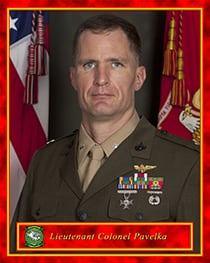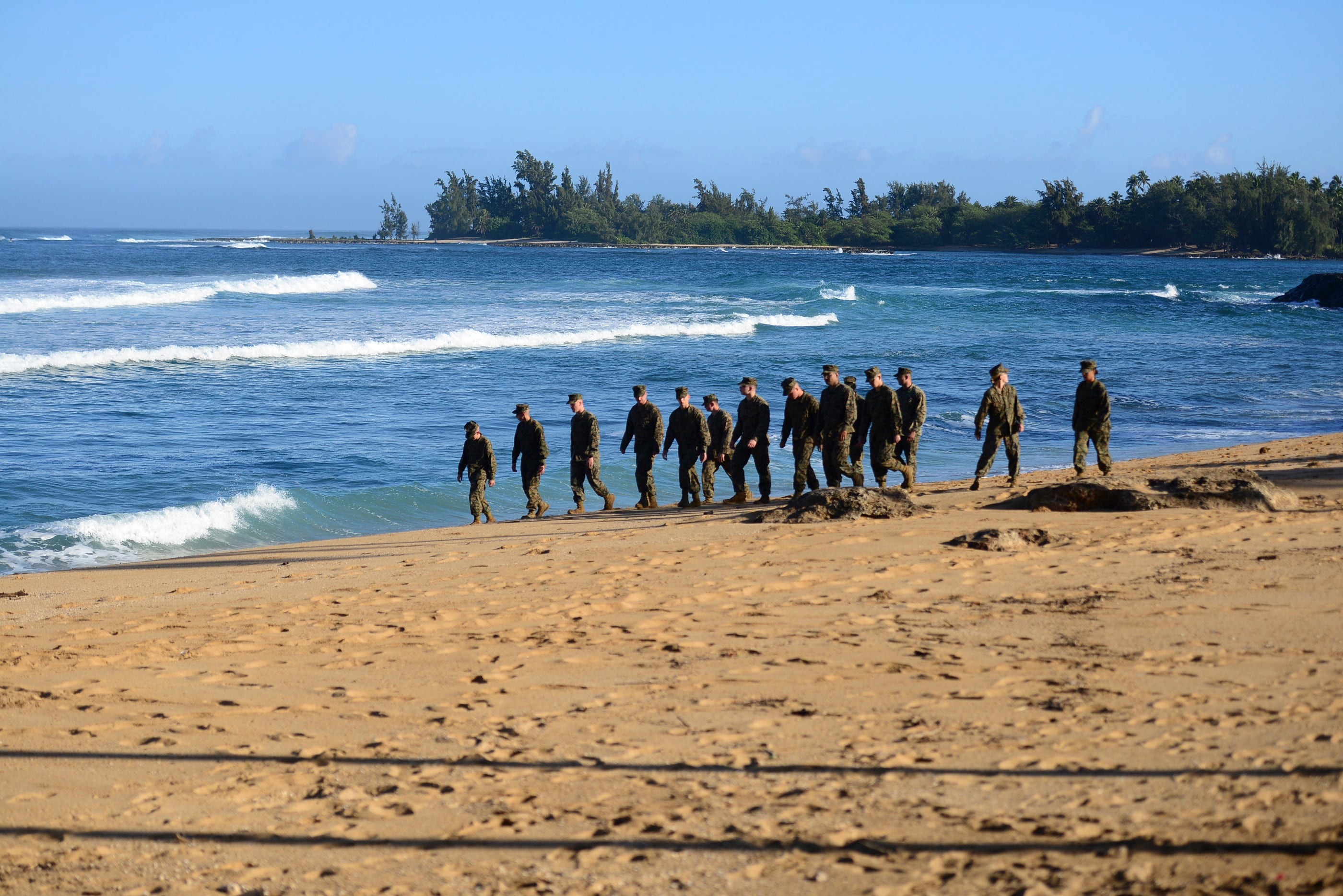The Marine Corps helicopter squadron reeling from the recent deaths of 12 colleagues saw its commanding officer removed from his job three days prior to the tragedy because senior officials determined he had failed to keep the unit operating at acceptable standards, Marine Corps Times has learned.
Lt. Col. Edward Pavelka was relieved of command Jan. 11, multiple sources confirmed. On Jan. 14, two CH-53E helicopters from Marine Heavy Helicopter Squadron 463 disappeared over the Pacific Ocean during a nighttime training mission about two miles north of Hawaii's Oahu island, where the aircraft were based.
Pavelka, who led the squadron for less than 11 months, declined a request for comment.
A Marine official familiar with Pavelka's removal told Marine Corps Times that the commander was "not able to maintain material readiness standards ... for optimal use of manpower, material, facilities and funding."
"The Marine Corps has an exceptionally high standard for combat readiness and proficiency — especially in the aviation community," the official said, speaking on the condition of anonymity because he is not authorized to discuss specific personnel matters. "We hold commanders ultimately responsible for their units."

Lt. Col. Edward Pavelka, the former commanding officer of Marine Heavy Helicopter Squadron 463, was removed from his job Jan. 11 when superiors lost confidence in his ability to lead his Marines.
Photo Credit: Marine Corps
A Marine Corps spokeswoman, 1st Lt. Courtney Caimona, provided a statement to Marine Corps Times indicating that Brig. Gen. Russell Sanborn, the commanding general of 1st Marine Aircraft Wing, lost confidence in Pavelka's ability to lead the squadron, calling the move "in the best interest of the Marines and sailors of Marine Heavy Helicopter Squadron 463 and the Marine Corps."
"Pavelka did not commit misconduct," Caimona emphasized.
Sanborn announced the change in leadership during a unit-wide formation on Jan. 11, Caimona said. When Marine Corps Times inquired about Pavelka's firing, the general offered to discuss his decision and related questions about the squadron's recent performance. The interview was later canceled, however.
Formal investigations into the accident are ongoing, Marine officials said. The search for survivors lasted five days. It was called off last week, on Jan. 20, and all 12 Marines were declared dead although no remains were recovered.
It's not immediately clear what brought down the aircraft. Initial reports suggested they collided over the ocean and exploded. Coast Guard rescuers located four life rafts, but concluded that none had been occupied.

Troops walk along a beach in Hawaii on Jan. 18 during search efforts for 12 missing Marines.
Photo Credit: Petty Officer 1st Class Levi Read/Coast Guard
Six Marines were aboard each aircraft, Caimona said. On both, one instructor pilot was paired with a student pilot, and two instructor crew chiefs were paired with two students. Their training involved night vision equipment and a simulated scenario meant to practice loading troops and moving them.
It's unclear who was at the controls when the accident occurred.
"The instructors," Caimona said, "were fully qualified as crew chiefs and pilots in their respective roles."
However, a Marine familiar with the squadron's troubles leading up to Pavelka's removal said the squadron as a whole was "way, way low" on flight time. That source declined to speculate what may have depleted training opportunities, saying only "they were not flying enough."
Last September, after another deadly CH-53E crash in North Carolina, a Marine Corps Times investigation found that aviation-related deaths in the Marine Corps — there were at least 19 between January and October — had reached a five-year high. That analysis examined mishaps involving the service's fixed-wing jets, helicopters and MV-22B Ospreys.
Maintenance, flight hours and the effect on overall safety are concerns often cited by military leaders in the face of deep budget cuts imposed by Congress. Marine Corps Times requested the squadron's most recent readiness reports and inspection data, but officials declined to release that information saying "they may become relevant to ongoing investigations."
The CH-53 heavy-lift helicopter is always in great demand by operational commanders around the world. Pavelka's squadron recently deployed a detachment to Australia for six months, between April and October. The squadron's aircraft also have flown in support of several recent training exercises throughout the Asia-Pacific region.
Pavelka is awaiting a new assignment, Caimona said. He was replaced in Hawaii by Lt. Col. Eric Purcell.
Purcell addressed the squadron's Marines immediately after assuming command on Jan. 11. Sanborn has "the utmost faith and confidence" in Purcell's ability to lead them after the tragedy on Jan. 14, Caimona said.
Gina Harkins is the editor of Marine Corps Times. She oversees reporting on Marine Corps leadership, personnel and operations. She can be reached at gharkins@marinecorpstimes.com.
Andrew deGrandpre is a senior editor with the Military Times group. He oversees enterprise reporting and investigations. He can be reached at adegrandpre@militarytimes.com.




